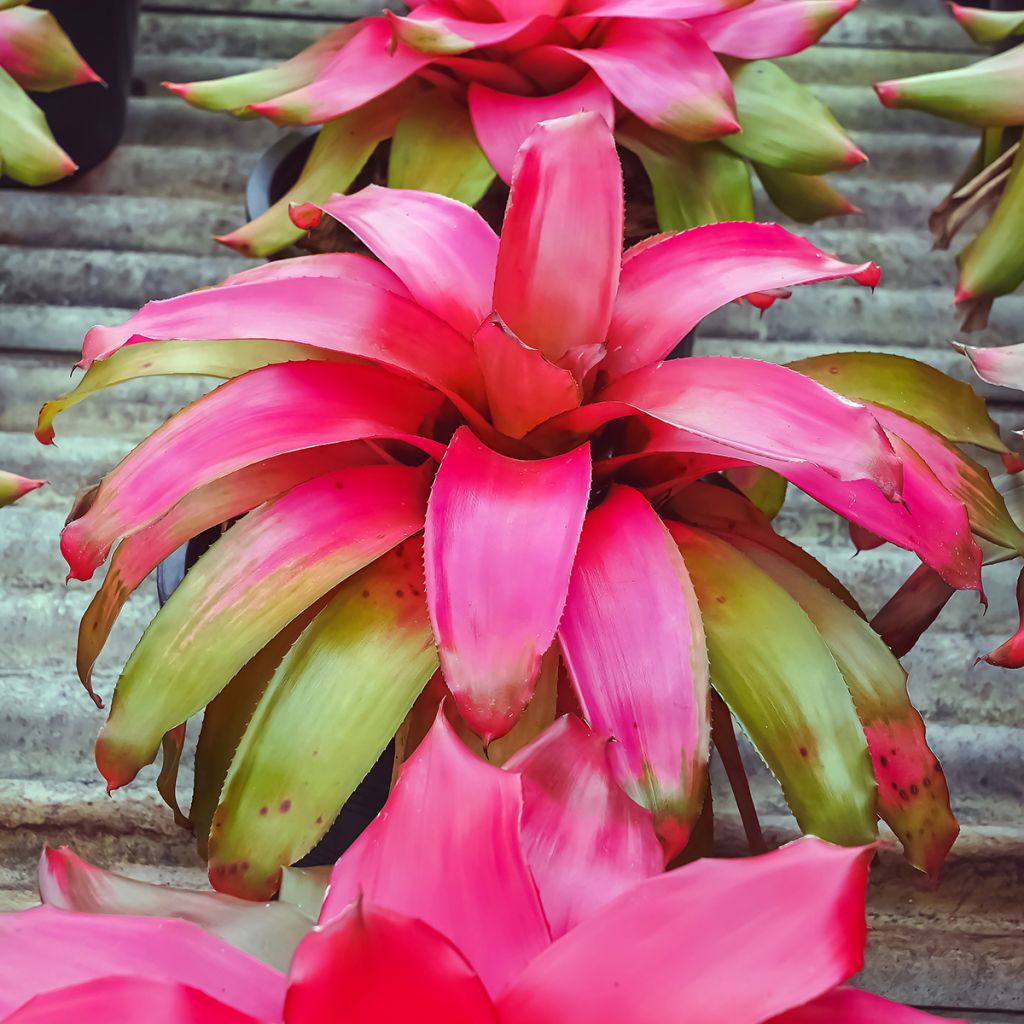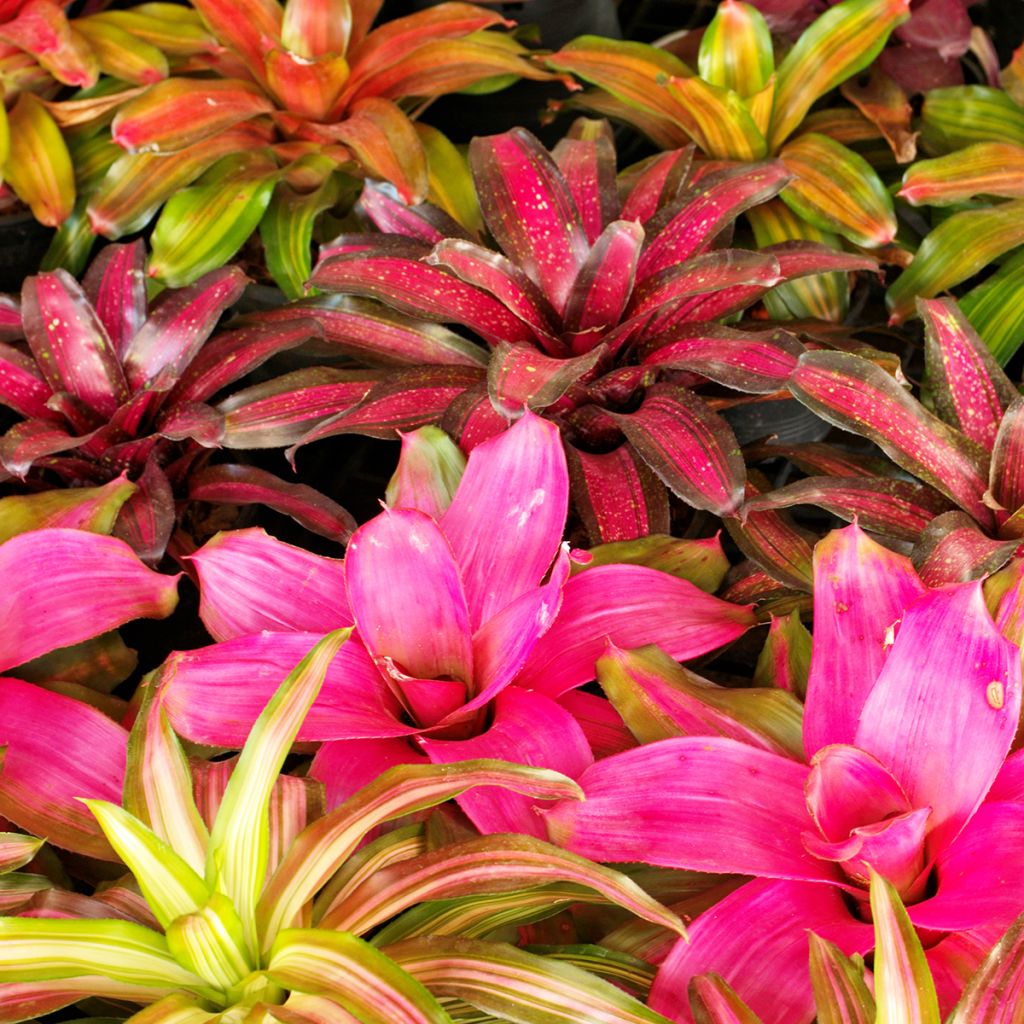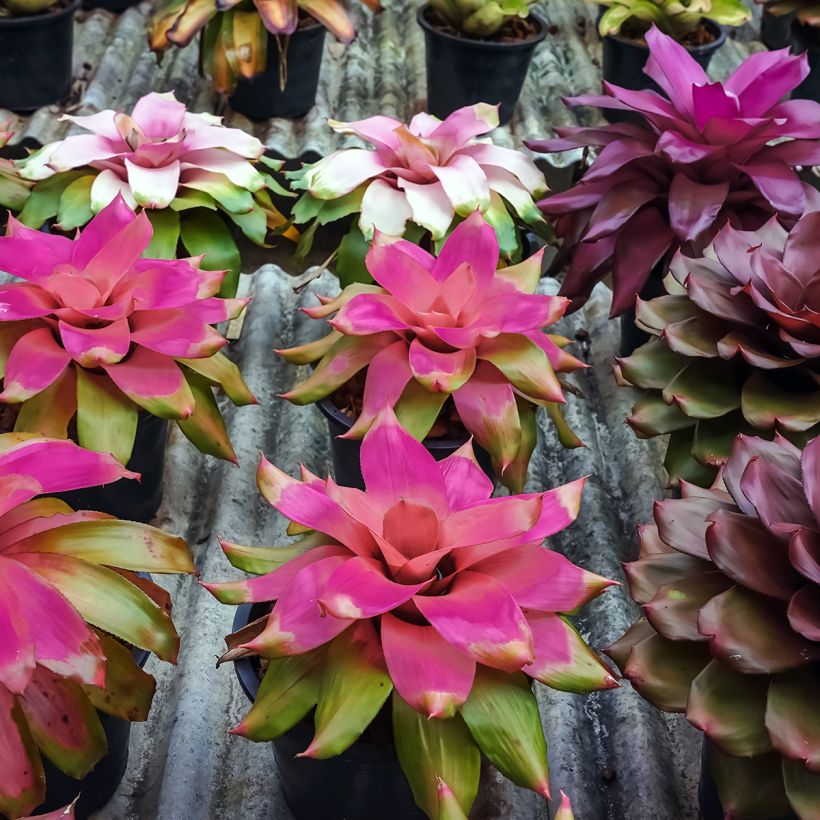

Neoregelia Medusa - Blushing bromeliad


Neoregelia Medusa - Blushing bromeliad
Neoregelia Medusa - Blushing bromeliad
Neoregelia Medusa
Blushing bromeliad
Special offer!
Receive a €20 voucher for any order over €90 (excluding delivery costs, credit notes, and plastic-free options)!
1- Add your favorite plants to your cart.
2- Once you have reached €90, confirm your order (you can even choose the delivery date!).
3- As soon as your order is shipped, you will receive an email containing your voucher code, valid for 3 months (90 days).
Your voucher is unique and can only be used once, for any order with a minimum value of €20, excluding delivery costs.
Can be combined with other current offers, non-divisible and non-refundable.
This plant carries a 30 days recovery warranty
More information
We guarantee the quality of our plants for a full growing cycle, and will replace at our expense any plant that fails to recover under normal climatic and planting conditions.
Description
The Neoregelia 'Medusa' is one of the most decorative indoor bromeliads. It forms a beautiful rosette of leaves striped with green and red, with the centre acting as a "reservoir" for water. Its tough, spiny, variegated leaves bring all the exuberance of the Brazilian tropical forests into your home. This variety thrives in a bright environment without direct sunlight and requires moderate ambient humidity. In the living room or office, it fits perfectly into a contemporary or "jungle" décor.
Belonging to the Bromeliaceae family, the Neoregelia 'Medusa' is a cultivar created by the world-renowned hybridiser Chester Skotak, based in Costa Rica since 1978. Like the 'Hannibal Lecter' cultivar from which it originates, this 'Medusa' variety carries the genes of Neoregelia punctatissima and N. carcharodon 'Tiger'. The 'Medusa' variety stands out for its olive-green foliage adorned with dark reddish-brown bands and spots, reminiscent of its parent 'Hannibal Lecter', but with even more intense colours and leaves featuring a pronounced curve. This epiphytic perennial plant forms a dense rosette of stiff, slightly arched, spiny leaves, reaching around 40 cm in height with a spread of up to 50 cm. The leaves, with a glossy texture, are edged with small teeth and tipped with a reddish thorn. The discreet flowering produces small purple or blue flowers at the centre of the rosette, typically in summer. After flowering, the mother plant dies, but produces offsets ensuring its continuity. The growth of Neoregelia 'Medusa' is relatively slow.
The Neoregelia genus includes over 70 species, primarily native to the tropical forests of Brazil. These epiphytic plants grow by clinging to tree branches, benefiting from ambient humidity and the dappled light of the canopy.
The Neoregelia ‘Medusa’ will thrive in a bright room such as a living room, conservatory, or even a well-lit bathroom, where natural humidity suits it. In a modern interior, place it on a stylish stand for contrast. Pair it with other Bromeliads like Tillandsia, or with foliage plants such as Monstera.
Report an error about the product description
Neoregelia Medusa - Blushing bromeliad in pictures


Foliage
Plant habit
Flowering
Botanical data
Neoregelia
Medusa
Bromeliaceae
Blushing bromeliad
Cultivar or hybrid
Safety measures
Location
Location
Maintenance and care
Watering tips
Potting advice, substrates and fertilisers
Houseplant care
Disease and pest advice
Maintenance and care
This item has not been reviewed yet - be the first to leave a review about it.
Haven't found what you were looking for?
Hardiness is the lowest winter temperature a plant can endure without suffering serious damage or even dying. However, hardiness is affected by location (a sheltered area, such as a patio), protection (winter cover) and soil type (hardiness is improved by well-drained soil).

Photo Sharing Terms & Conditions
In order to encourage gardeners to interact and share their experiences, Promesse de fleurs offers various media enabling content to be uploaded onto its Site - in particular via the ‘Photo sharing’ module.
The User agrees to refrain from:
- Posting any content that is illegal, prejudicial, insulting, racist, inciteful to hatred, revisionist, contrary to public decency, that infringes on privacy or on the privacy rights of third parties, in particular the publicity rights of persons and goods, intellectual property rights, or the right to privacy.
- Submitting content on behalf of a third party;
- Impersonate the identity of a third party and/or publish any personal information about a third party;
In general, the User undertakes to refrain from any unethical behaviour.
All Content (in particular text, comments, files, images, photos, videos, creative works, etc.), which may be subject to property or intellectual property rights, image or other private rights, shall remain the property of the User, subject to the limited rights granted by the terms of the licence granted by Promesse de fleurs as stated below. Users are at liberty to publish or not to publish such Content on the Site, notably via the ‘Photo Sharing’ facility, and accept that this Content shall be made public and freely accessible, notably on the Internet.
Users further acknowledge, undertake to have ,and guarantee that they hold all necessary rights and permissions to publish such material on the Site, in particular with regard to the legislation in force pertaining to any privacy, property, intellectual property, image, or contractual rights, or rights of any other nature. By publishing such Content on the Site, Users acknowledge accepting full liability as publishers of the Content within the meaning of the law, and grant Promesse de fleurs, free of charge, an inclusive, worldwide licence for the said Content for the entire duration of its publication, including all reproduction, representation, up/downloading, displaying, performing, transmission, and storage rights.
Users also grant permission for their name to be linked to the Content and accept that this link may not always be made available.
By engaging in posting material, Users consent to their Content becoming automatically accessible on the Internet, in particular on other sites and/or blogs and/or web pages of the Promesse de fleurs site, including in particular social pages and the Promesse de fleurs catalogue.
Users may secure the removal of entrusted content free of charge by issuing a simple request via our contact form.
The flowering period indicated on our website applies to countries and regions located in USDA zone 8 (France, the United Kingdom, Ireland, the Netherlands, etc.)
It will vary according to where you live:
- In zones 9 to 10 (Italy, Spain, Greece, etc.), flowering will occur about 2 to 4 weeks earlier.
- In zones 6 to 7 (Germany, Poland, Slovenia, and lower mountainous regions), flowering will be delayed by 2 to 3 weeks.
- In zone 5 (Central Europe, Scandinavia), blooming will be delayed by 3 to 5 weeks.
In temperate climates, pruning of spring-flowering shrubs (forsythia, spireas, etc.) should be done just after flowering.
Pruning of summer-flowering shrubs (Indian Lilac, Perovskia, etc.) can be done in winter or spring.
In cold regions as well as with frost-sensitive plants, avoid pruning too early when severe frosts may still occur.
The planting period indicated on our website applies to countries and regions located in USDA zone 8 (France, United Kingdom, Ireland, Netherlands).
It will vary according to where you live:
- In Mediterranean zones (Marseille, Madrid, Milan, etc.), autumn and winter are the best planting periods.
- In continental zones (Strasbourg, Munich, Vienna, etc.), delay planting by 2 to 3 weeks in spring and bring it forward by 2 to 4 weeks in autumn.
- In mountainous regions (the Alps, Pyrenees, Carpathians, etc.), it is best to plant in late spring (May-June) or late summer (August-September).
The harvesting period indicated on our website applies to countries and regions in USDA zone 8 (France, England, Ireland, the Netherlands).
In colder areas (Scandinavia, Poland, Austria...) fruit and vegetable harvests are likely to be delayed by 3-4 weeks.
In warmer areas (Italy, Spain, Greece, etc.), harvesting will probably take place earlier, depending on weather conditions.
The sowing periods indicated on our website apply to countries and regions within USDA Zone 8 (France, UK, Ireland, Netherlands).
In colder areas (Scandinavia, Poland, Austria...), delay any outdoor sowing by 3-4 weeks, or sow under glass.
In warmer climes (Italy, Spain, Greece, etc.), bring outdoor sowing forward by a few weeks.





























